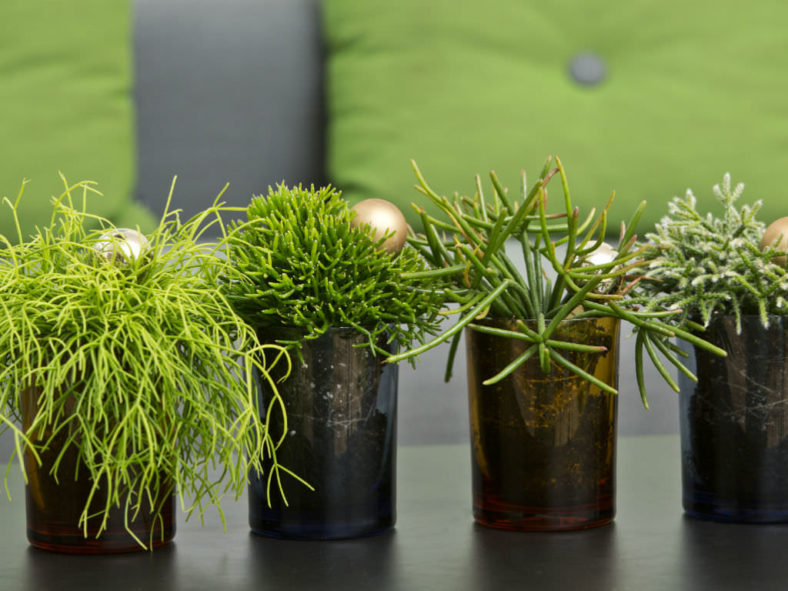Rhipsalis is a genus of cacti with approximately 35 distinct species. One of the most popular species is Rhipsalis baccifera, commonly known as the Mistletoe Cactus.
While many people think of the prickly plants native to the American deserts when they hear the name "cactus," most Rhipsalis have no spines, and they would not survive the dry soil and bright sun of a desert. All species are native to the rainforests of South America, the Caribbean, and Central America, leading to their classification as jungle cacti. The difference between the native environments of jungle cacti and desert cacti means that caring for Rhipsalis requires overcoming any preconceived notions you might have about what cacti prefer.
Lighting Requirements
Rhipsalis cacti do not thrive in direct sunlight. Exposure to the afternoon sun can burn the stems, turn them yellow, or lead to spotting. However, they will not bloom without sufficient sunlight, and their growth can be stunted. These cacti do best with morning sun and full shade in the afternoon. As Rhipsalis cacti are commonly grown indoors, care must be given to the placement of the plants. They should be kept at least 20 inches (50 cm) from windows that receive midday or afternoon sun. The glass in the windows can multiply the heat from the sun's rays, causing sunburned leaves. Keep in mind that in its native environment, Rhipsalis is accustomed to receiving light filtered through dense, overhanging tree branches. Picturing this environment can help you adjust your lighting accordingly.

Watering
Rhipsalis cacti are not drought-resistant plants, so regular watering is essential. Overwatering, however, can cause weak stems and rotted roots. Using a watering can help you measure the amount of water you are providing. The pot size, compared to the size of the plant, the humidity levels in the home, and the type of potting soil used can all affect the watering frequency. Rhipsalis cacti seldom need to be watered more than once a week. Check before watering by pressing your finger into the soil to half an inch. Postpone watering if the soil is moist. You can also use a moisture meter to help you determine whether it is time to water.
Selecting Pots
Rhipsalis cacti do best when planted in clay pots. The advantage of clay pots is that they allow the soil to "breathe" better than other types, helping to dissipate moisture that could rot the plant's roots. Most species produce long, hanging leaves that make them ideal hanging plants, so when selecting pots, many people choose styles that can be placed in a metal or macramé plant hanger.
Soil
Novices in the world of jungle cacti might prefer purchasing potting soil made specifically for cacti. However, gardeners with experience growing succulents can make their own by combining regular potting soil with coir, orchid bark, or gravel to ensure proper drainage. Most species need to be transplanted using fresh potting soil every two or three years. When repotting, take care not to damage the roots.
Fertilizing
Do not feed newly repotted or just purchased Rhipsalis for 12 months. Rhipsalis cacti do not need feeding until the soil becomes depleted of nutrients. If feeding is desired, use a diluted, half-strength fertilizer formulated for cacti. Feed monthly only during the spring and summer months. Follow the directions provided with the fertilizer to determine the correct quantity, which will be based on plant size, pot size, and other factors.
Source: ebay.com
Links
- Back to genus Rhipsalis
- Succupedia: Browse succulents by Scientific Name, Common Name, Genus, Family, USDA Hardiness Zone, Origin, or cacti by Genus